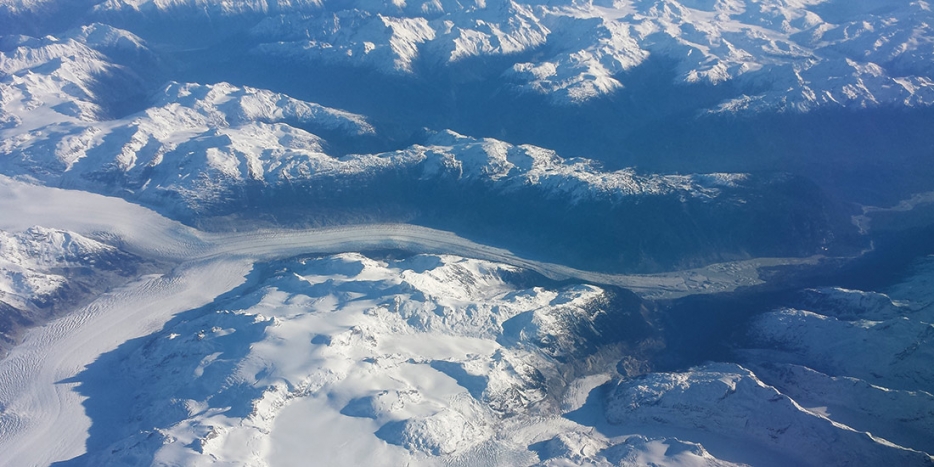 Arctic crossing: The region around the confluence of the Silverthrone and Klinaklini glaciers in Southwest British Columbia provides a glimpse into how the terrain traveled by Native Americans in Pleistocene times may have appeared. (Photo by David J. Meltzer)
Arctic crossing: The region around the confluence of the Silverthrone and Klinaklini glaciers in Southwest British Columbia provides a glimpse into how the terrain traveled by Native Americans in Pleistocene times may have appeared. (Photo by David J. Meltzer)Origin science
The first Americans traveled east from Siberia via a land bridge into modern-day Alaska and Canada no more than 23,000 years ago, at the height of the last Ice Age. After a pause of perhaps thousands of years, some groups left for South America while others stayed to roam the continent, diversifying into two branches.
These findings, revealed by a new genomic analysis of the most comprehensive genetic data set from Native Americans to date, both support and dispel some earlier ideas. While they confirm the most popular theory of the settling of the Americas, they refute the notion that an earlier wave of people came from East Asia. The new evidence also undercuts theories that multiple independent waves of migration produced the major subgroups of Native Americans we see today and that Polynesians or Europeans contributed to the gene pool of the first Americans.
Researchers used different statistical models — one created by the lab of associate professor of electrical engineering and computer sciences Yun Song and another by integrative biology professor Rasmus Nielsen — to analyze the sequenced genomes of multiple individuals, including Native Americans, Siberians and Oceanians.
Read more: Genome analysis pinpoints arrival and spread of first Americans

